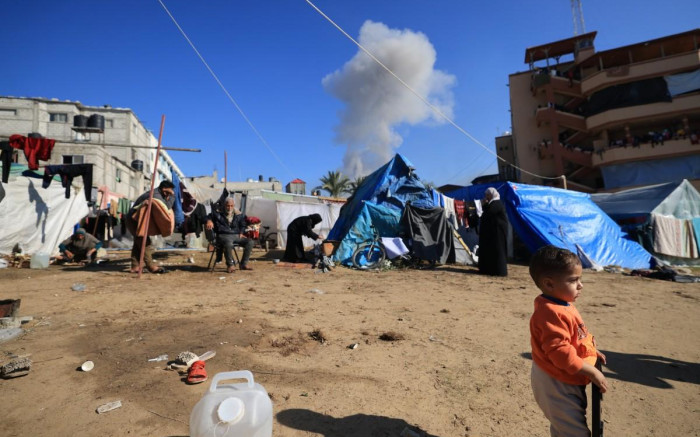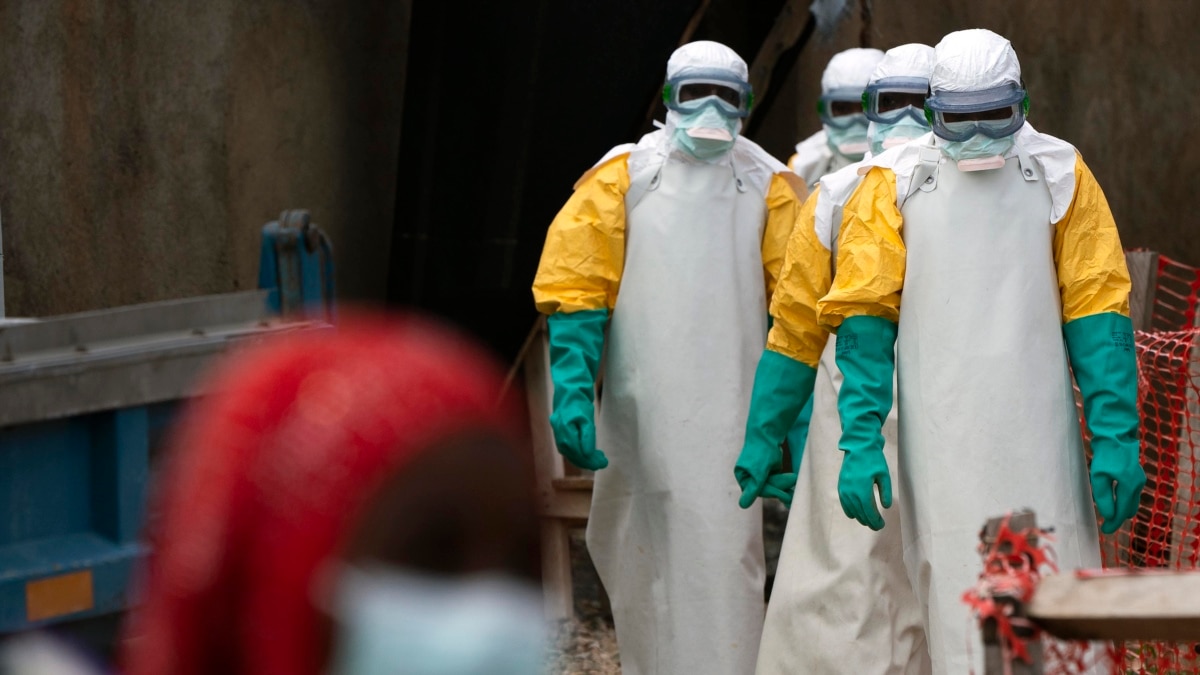
Israel’s defense minister has laid out preliminary plans for the post-war administration of the Gaza Strip for the first time, saying that neither Israel nor Hamas will govern the Palestinian territory after hostilities there end.
People gather near tents used as emergency shelters as smoke rises during an Israeli attack on Khan Yunis in the southern Gaza Strip January 4, 2024, amid ongoing fighting between Israel and Palestinian Hamas militants. Image: AFP
ISRAEL – Israel’s defense minister has laid out preliminary plans for the post-war administration of Gaza for the first time, saying neither Israel nor Hamas will govern the Palestinian territory after hostilities there end.
The plan for the “day after” the war was unveiled Thursday evening on the eve of a trip to the region by U.S. Secretary of State Antony Blinken, who is returning to the Middle East for the fourth time since a Hamas attack on Oct. 7 sparked the war Gaza out.
The question of the territory’s future is at the forefront of many minds as calls for a ceasefire grow, the civilian death toll soars and the U.N. warns of a humanitarian crisis leaving hundreds of thousands displaced, starvation and disease.
A draft of Defense Minister Yoav Gallant’s post-war plan, released to the press before it was submitted to the country’s war cabinet, said: “Hamas will not govern Gaza, (and) Israel will not govern the civilian population of the Gaza Strip.”
“The residents of the Gaza Strip are Palestinians, therefore Palestinian authorities will bear responsibility, on the condition that there will be no hostile actions or threats against the State of Israel,” it added.
Under the plan, which has not yet been adopted, Israel’s war in the area will continue until the return of the hostages kidnapped on October 7 is secured and Hamas’s “military and governance capabilities” are dismantled.
After that, the draft says, a new phase would begin in which local Palestinian bodies would take over administration of the territory.
Israel launched its campaign to destroy Hamas after the group’s bloody attack on October 7, which killed about 1,140 people, most of them civilians, according to an AFP tally based on official Israeli figures.
According to Israel, the militants also took about 250 hostages, 132 of whom are still in captivity.
The military’s relentless bombardment and ground operations have reduced swathes of the Gaza Strip to rubble and claimed at least 22,438 lives, according to the territory’s Hamas-run health ministry.
“NO WATER, NO ELECTRICITY, NO FOOD”
On Thursday, the army reported further attacks in and around Gaza City, now a largely destroyed urban battle zone, and Khan Yunis, the largest city in the territory’s south.
The army said it killed Hamas fighters around Khan Yunis, attacked “terrorist infrastructure” in the area and hit militants who tried to “place an explosive device near soldiers.”
It also said an airstrike in northern Gaza killed the chief of operations for Islamic Jihad, a Palestinian militant group fighting alongside Hamas.
The expulsions continued unabated. AFP footage showed families arriving in the southern border town of Rafah in overloaded cars and on foot, pushing handcarts full of bedding and other possessions.
“We escaped from Jabalia camp to Maan (in Khan Yunis) and now we are fleeing from Maan to Rafah,” said a woman who declined to give her name.
“They shot at us. (We have) no water, no electricity and no food.”
During his visit, Blinken may have difficult discussions with Israeli leaders about “immediate action to significantly increase humanitarian assistance to Gaza,” State Department spokesman Matthew Miller said.
“We don’t expect every conversation on this journey to be easy. “The region obviously faces difficult problems and difficult decisions,” Miller said.
UN human rights chief Volker Turk, meanwhile, said he was “very concerned” by recent comments from two Israeli cabinet ministers, each calling on Palestinians to leave Gaza, stoking fears of mass displacement.
National Security Minister Itamar Ben-Gvir had also called for the return of Israeli settlers to Gaza after the war, repeating similar statements by the right-wing extremist Finance Minister Bezalel Smotrich.
But the postwar plan presented by Gallant on Thursday said that while Israel reserved the right to operate within the territory, there would be “no Israeli civilian presence in the Gaza Strip after the war objectives have been achieved.”
REGIONAL TENSIONS
Israel’s war against Hamas is threatening to expand into a larger regional conflict after an attack in Lebanon – widely believed to have been carried out by Israel – killed Hamas deputy leader Saleh al-Aruri.
Aruri was killed on Tuesday in the southern Beirut stronghold of the powerful Iran-backed Hezbollah movement, which has been carrying out gunfights across the border with Israel for months.
Hezbollah has vowed that killing in its home territory will not go unpunished and its leader Hassan Nasrallah warned Israel of an all-out conflict after Israeli army chief Herzi Halevi said troops on the Lebanese border were “at a very high level of readiness.” be.
The Shiite Muslim militant group said on Thursday that another four of its fighters had been killed overnight, bringing its losses to 129 since border hostilities erupted.
Defense Secretary Gallant said on social media that Israel favors “a political solution” to the border disputes but that “the window of opportunity for this is short.”
The Israeli government is pushing for Hezbollah to withdraw from the border area.
Regional tensions worsened further after two bomb explosions in Iran on Wednesday killed 84 people near the grave of Revolutionary Guard General Qasem Soleimani, who was killed in a US drone strike in Baghdad four years ago.
The Islamic State jihadist group claimed responsibility for the suicide attacks on Thursday after Iran initially blamed Israel and the United States following the attacks.






Recent Comments